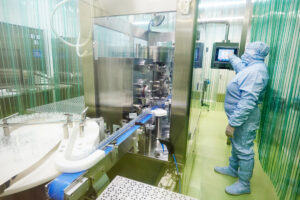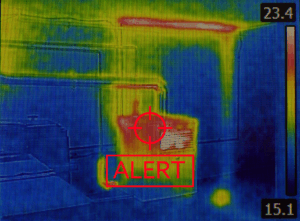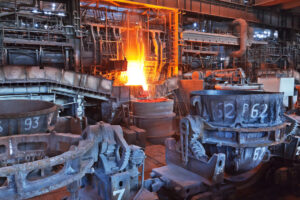Saltwater environments present some of the most challenging conditions for industrial equipment. Marine locations like shipyards, ports, vessels, manufacturing facilities, berthing areas, and drydocks are particularly hostile due to relentless exposure to saltwater, humidity, and harsh weather.
Some of the most vulnerable types of equipment in these environments are the ones with small, sensitive electrical components like cameras. These are critical for operational efficiency, safety, and security, but they need to be right for the environment. Standard cameras simply aren’t designed to withstand the corrosive nature of saltwater, which means businesses face frequent replacements, increased downtime, and escalating operational costs.
Let’s unpack this.
The Corrosive Power of Saltwater Vs. Off-the-Shelf Cameras
Saltwater accelerates corrosion through an electrochemical reaction, which deteriorates metals significantly faster than freshwater or humidity alone. According to the National Association of Corrosion Engineers (NACE), the global cost of corrosion is estimated at around $2.5 trillion annually, and marine corrosion accounts for a substantial portion of this total due to its aggressive nature.
Typical commercial cameras—often made from aluminum, plastic, or mild steel—rapidly degrade in saltwater conditions. Saltwater-induced corrosion manifests as rust on metallic surfaces, brittleness in plastic components, and compromised internal electronics due to moisture ingress.
This damage inevitably leads to equipment failure, security vulnerabilities, and operational downtime.
Why Stainless Steel for Marine Cameras?
To counteract these harsh conditions, stainless steel has become the material of choice for marine-grade video monitoring cameras. Unlike regular steel, stainless steel contains chromium, which forms an oxide layer that significantly reduces the risk of corrosion.
Moreover, stainless steel maintains structural integrity far better than aluminum or carbon steel, leading to less frequent maintenance and significantly longer equipment life.
Advantages of Marine Stainless Steel Cameras
Stainless steel cameras deliver several advantages that directly contribute to business productivity and cost-efficiency:
1. Enhanced Durability and Reduced Maintenance
The robust construction of stainless steel cameras withstands saltwater spray, frequent weather changes, and physical impacts, dramatically reducing the need for maintenance or replacements.
This means fewer interruptions to your operations and lower lifecycle costs.
2. Improved Reliability in Difficult to Access Locations
Marine operations frequently require cameras positioned in hard-to-reach or elevated locations. Regular maintenance or frequent replacements in such areas are costly and disruptive.
Stainless steel cameras minimize these interruptions, ensuring continuous monitoring.
3. Increased Safety and Security
Corrosion-free cameras provide uninterrupted visual coverage critical to operational safety, emergency response, and site security.
Monitoring and Optimizing Operations
Beyond security, stainless steel cameras play a crucial role in monitoring and optimizing operations in maritime facilities. Video monitoring systems provide real-time visuals of workflows, vessel traffic, cargo handling, and environmental conditions.
Camera systems that integrate with IoT and analytics platforms help managers identify bottlenecks, enhance productivity, and ensure regulatory compliance.
For instance, accurate visual monitoring allows quicker responses to potential hazards, improved scheduling and logistics at ports, and better maintenance planning for shipyards and drydocks.
How to Choose the Right Marine Cameras
Corrosion resistance is the first criterion you need to consider when choosing cameras for marine environments. However, it’s not the only one.
Saltwater is not the only enemy of electronic equipment in marine environments. Plus, you need your cameras to do more than just exist.
So here’s what to look for:
- Ingress Protection (IP) Ratings: Cameras for marine environments should have a minimum IP67 or IP68 rating. These ratings mean that your cameras have strong resistance to water and dust ingress.
- Operating Temperature Range: Marine environments experience extreme temperatures. Cameras should operate reliably within a broad temperature spectrum.
- Ease of Installation and Maintenance: Opt for cameras designed for straightforward installation and minimal upkeep, particularly valuable in remote or elevated positions.
The Cost-Benefit Analysis
All things considered, when you have the right camera system, the cost of ownership over the long-term is lower.
Plus, your ROI is better because you reduce downtime, your operations are monitored constantly, and there are no gaps in your security surveillance.
More importantly, when you work with an experienced partner, you can optimize your initial investment by using a hybrid video monitoring system. Not every area needs a ruggedized camera or ruggedized accessories. We help clients pinpoint the areas that require ruggedized cameras and those where regular cameras will do the job.
Building Your Video Monitoring System for Marine Environments
Building a video monitoring system from scratch can be very intimidating, especially for challenging environments. But you don’t have to do it alone.
At Opticom Tech, we don’t just sell cameras and parts—we sell the complete solution, including decades of expertise in industrial video monitoring. So, if you’re not sure about which cameras and accessories you need for your marine environment, reach out.







